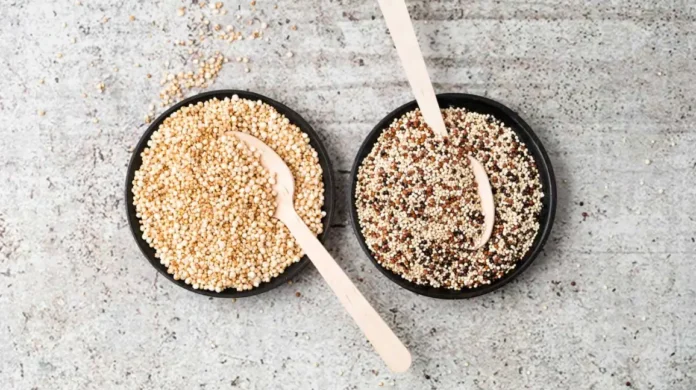Introduction to the Ancient Grain in a Healthy Cereal NYT
Have you ever found yourself scratching your head over an Ancient Grain in a Healthy Cereal NYT? One that stumps even the most seasoned puzzlers? If you’ve encountered “Ancient Grain in a Healthy Cereal,” you’re not alone. This intriguing clue hints at something more than just breakfast; it points to a world of nutrition packed into those tiny grains that have been sustaining humanity for centuries. As we dive deeper, we’ll explore why ancient grains deserve a spot on your breakfast table and how they can add both flavor and health benefits to your morning routine. Get ready to uncover the secrets behind this delicious puzzle piece!
Explaining the clue and its answer
The crossword clue “Ancient Grain in a Healthy Cereal NYT” invites puzzlers to think about grains that have stood the test of time. It hints at something nutritious and wholesome, making it a delightful challenge for food enthusiasts.
When you uncover the answer—quinoa—you unlock more than just a solution. Quinoa has roots dating back thousands of years, originating from the Andean region of South America. This ancient grain is celebrated not only for its versatility but also for its impressive nutritional profile.
Rich in protein and fiber, quinoa provides essential amino acids that many other grains lack. As people seek healthier breakfast options, this clue elegantly leads us to an ingredient that’s both satisfying and beneficial to our well-being. It’s no wonder that ancient grains are becoming staples in modern diets!
History of ancient grains and their health benefits
Ancient grains have been part of the human diet for thousands of years. They were cultivated by early civilizations, including the Egyptians and Mesopotamians. These grains include quinoa, spelt, farro, and amaranth.
Rich in nutrients, ancient grains offer significant health benefits. They are packed with fiber, which aids digestion and promotes heart health. Their low glycemic index helps regulate blood sugar levels—perfect for those looking to manage their weight.
These grains also boast higher protein content than modern wheat varieties. Plus, they provide essential vitamins and minerals like iron, magnesium, and B vitamins.
Many ancient grains are gluten-free or lower in gluten compared to traditional options. This makes them a versatile choice for various diets while retaining their delicious flavors and textures. Embracing these time-honored foods can be an exciting journey towards better nutrition.
The rise in popularity of ancient grains in recent years
In recent years, ancient grains have surged in popularity among health-conscious consumers. These nutrient-dense alternatives are not just a trend; they reflect a broader movement towards wholesome eating.
People are increasingly looking for ways to diversify their diets. This is where these grains shine, offering unique flavors and textures that traditional options lack. Quinoa, farro, and amaranth have become staples on grocery shelves and restaurant menus alike.
The rise of social media has also played a pivotal role. Food bloggers and influencers showcase delicious recipes featuring ancient grains. Their vibrant photos inspire creativity in the kitchen.
Moreover, as awareness grows about the benefits of sustainable agriculture, many seek out these heritage crops. Ancient grains often require fewer resources than modern varieties while enriching soil health—a win-win for both consumers and the environment.
How these grains are used in breakfast cereals
Ancient grains are making a significant mark in the breakfast cereal aisle. They bring unique textures and flavors that standard cereals often lack.
Quinoa, for instance, offers a nutty taste and can be puffed or flaked for crunch. Its protein-packed profile makes it an ideal base for nutritious blends.
Farro is another popular choice, providing chewy bites that complement sweet fruits and creamy yogurts. It adds depth to granola mixes too.
Amaranth stands out through its ability to pop like popcorn when heated. This creates fun little bursts of flavor in cereals aimed at both adults and children alike.
Spelt flakes offer mild sweetness while enhancing fiber content significantly without overwhelming other ingredients.
The versatility of these grains allows manufacturers to create innovative options that satisfy diverse dietary preferences while ensuring each bowl promotes health benefits as well.
Other creative ways to incorporate ancient grains into your diet
Ancient grains can add both nutrition and flavor to your meals. Consider using farro or quinoa as a base for salads. Toss in some fresh veggies and a zesty dressing for an easy, wholesome dish.
Another fun option is to incorporate these grains into soups. Barley or spelt can enhance the texture while providing hearty nutrients. They pair beautifully with beans and leafy greens.
Baking? Ancient grains shine here too. Substitute whole wheat flour with amaranth or teff flour in muffins or pancakes for a unique twist that adds depth of flavor.
Don’t forget about breakfast! Mix cooked millet into yogurt bowls topped with fruits and nuts for a satisfying start to your day.
Experimenting with ancient grains opens up culinary possibilities that are not only delicious but also packed full of health benefits.

